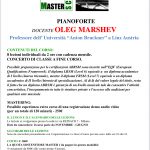MusicWeb International review.
My big discovery here was the many-faceted Daphne et Chloe: Fragments symphoniques. Splendid performances of Gaspard de la Nuit and theSonatine make this an exciting and rewarding disc.
Maurice Ravel (1875-1937)
Danse gracieuse et légère de Daphnis(1909-1912)
Fragments Symphoniques(1909-1912)
Scène de Daphnis et Chloé(1909-1912)
Sonatine (1903-1905)
Menuet sur le nom d’Haydn(1910)
Gaspard de la nuit(1908)
Fugue in E flat major (1900)
Fugue in D major (1900)
Oleg Marshev (piano)
rec. 2022
DANACORD DACOCD904
This is the second of a projected three-volume edition of the complete solo piano music of French composer Maurice Ravel. I reviewed Volume 1here.
The track listings above comes from the liner notes, but there is a slight problem with nomenclature. In 1912, Maurice Ravel finished his massive balleticDaphne and Chloé, a “symphonie chorégraphique” for orchestra and wordless chorus. Diaghilev’s Russian Ballet premiered it in Paris on 8 June 1912. Ravel extracted material for two orchestral suites: in 1911,Fragments symphoniques de ‘Daphnis et Chloé’ I(Nocturne, Interlude and Danse guerrière), commonly called Suite No. 1; in 1913,Fragments symphoniques de ‘Daphnis et Chloé’ II(Lever du jour, Pantomime and Danse générale), or Suite No. 2. Both remain popular to this day.
What Oleg Marshev has recorded here is, in fact, a piano suite Ravel assembled in 1913 from the piano reduction score of the entire ballet, with the full titleDaphnis et Chloe: Fragments symphoniques. Durand and Co. published it in 1912. It consists of three movements,Danse de Daphnis,Nocturne, Interlude and Danse guerrière, and the finale,Scène de Daphnis et Chloé. I pulled the score to follow the performance. Apart from a few embellishments, Marshev plays it precisely, in a satisfying and attractive account. Of course, there could be another edition of this transcription that I was unable to locate. Some amazing Ravelian sonorities in these pages display technical wizardry and a deeper classical reticence. It is an important addition to the catalogue.
Some four years separate Ravel’s impressionisticJeux d’eauand his Sonatine. The two works could not be more different. James Gibb (Keyboard Music, ed. Denis Mathews, Pelican,1972) has suggested that the latter piece “turned away from purely sensuous washes of sound and rediscovered economic textures and the stricter shapes of sonata form.” That said, the Sonatine is no simple exercise in neo-classicism. The opening Modéré is romantic, the Minuet is full of exquisite charm, and the last movement, a toccata, displays “sensual energy” and “nostalgic sighs”. Marshev infuses his playing with passion in the opening movement, warmth in the second, and dazzling brilliancy in the technical complexities of the finale.
The year 1909 was fallow for Ravel. The only work from around that time is theMenuet sur le nom d’Haydn, written to commemorate the centenary of the elder composer’s death. The “theme” is based on a translation into musical pitches of the name Haydn (B-A-D-D-G), which requires a little alphabetical manipulation. This motto theme appears eleven times, heard in retrograde and inversion. Typically, a wistful and unassuming number, it is a little unbalanced between the simplicity of the opening measures and the “more involved and overladen” second page.
Ravel’s piano masterpiece, the suiteGaspard de la Nuit, was first performed in Paris on 9 January 1909 by Ricardo Viñes. This cruel and terrible work was inspired by the prose-poems of Aloysius Bertrand. Wikipedia explains that the wordGaspardis derived from the Persian and implies “the man in charge of the royal treasures”. So by implication he is the guardian of the things of the night, the very Devil himself…
The opening movement,Ondine, is justifiably the most popular. It evokes the watery domain of this beautiful siren, drawing men to their inevitable doom. The second,Le Gibet, is a disturbing portrait of the gallows.Scarbo, the finale, represents a scary, diabolic creature conjured up from the deepest recesses of the mind.
Any performance must reflect the callous seductiveness ofOndine, the hopeless tread of the very static march to the scaffold with its insistent pedal note, and the sheer malevolence of the creature conjured up in the final movement. This work ought to unsettle and even scare the listener. I believe that Marshev does investGaspard de la Nuitwith sufficient cruelty and fear to make this an ideal performance.
Sadly, the liner notes give no details about the two fugues, only an oblique reference. I managed to find out that the Fugue in E flat major, probably penned in 1900, is based on a subject by the French composer, organist and music teacher Théodore Dubois. The Fugue in D major was written for that year’s Prix de Rome. Both are classically balanced,. Although the listener would not guess the composer with an innocent ear, they are anything but pedantic. I understand that Oleg Marshev has realised the original four-stave scores for pianoforte.
As usual, the booklet notes are helpful and interesting. It would have helped if the dates of each piece were given in the track listing. ForGaspard de la Nuit, it is not provided in the booklet text. I also wish that Danacord had featured a more fetching cover photograph for this superb recording project. Marshev’s sinister portrait does not do justice to the repertoire and the performance.
This volume will be of great interest to all Ravelians. My big discovery here was the many-facetedDaphne et Chloe: Fragments symphoniques. Splendid performances ofGaspard de la Nuitand theSonatinemake this an exciting and rewarding disc. I understand that the third and final volume, “in preparation”, will be released in the summer of 2023.
John France


